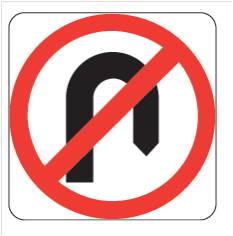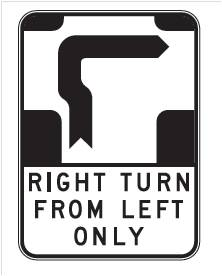Turning
A summary of the key road rules when turning.
Indicating
You must always use your indicators for long enough to warn others that you are making a turn, changing lanes or changing direction.
U turns
You are not allowed to make a U turn on a road if there is:
- a single continuous line down the centre of the road
- double continuous lines down the centre of the road
- a 'No right hand turn' sign
- a ‘no U-turn’ sign.
You are allowed to make a U turn:
- on other roads
- at intersections with traffic lights unless there is ‘no U-turn’ sign.
When making a U-turn you must give way to all other vehicles and pedestrians.

Our video will help you to know how to safely perform a U turn.
When you can safely perform a U-turn
Be careful when driving in other Australian states. In some cases you are only allowed to do a U turn if there is a sign saying that you can. If travelling interstate, check the road rules for that state before you leave.
Hook turns
You must make a hook turn at intersections that have a ‘Right Turn from Left Only’ hook turn sign.
A hook turn is a right hand turn you make from the left hand lane.

To do a hook turn you must follow these steps.
- Approach and enter the intersection from the far left hand lane and have your right indicator on.
- Move forward to the other side of the intersection, keeping as near as possible to the left of the intersection and clear of any pedestrian crossings.
- Stay stopped until the traffic lights on the road you are turning into have turned green.
- Turn right into the road.
Our video will help you to learn how to perform a hook turn.
Penalties
There are penalties for disobeying these rules which include fines and demerit points.
The rules in detail
The key road rules and reference numbers regarding for U turns, hook turns and other turns are:
- 29 - Making a left turn as indicated by a road marking
- 33 - Making a right turn
- 34 - Making a hook turn at a hook turn only sign
- 38 - Giving way when making a U-turn